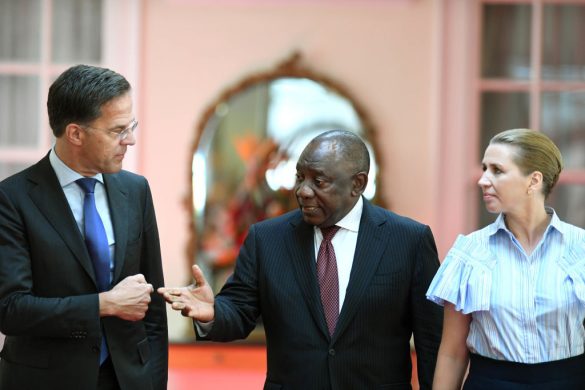After claiming in April that Swaziland’s King Mswati III (KMIII) Airport was a huge success and had confounded its critics, an aviation boss in the kingdom now says it is not doing well because Swazi people are too poor to fly, writes Swazi Media Commentary Tuesday.
The Swaziland Tourist Authority (STA) said there were 10,138 passengers departing the airport in January 2015 and 6,592 passengers arriving, making a total of 16,730 passengers. If these figures were repeated each month of the year, 200,760 passengers would travel through the airport in a year.
But, according to Swazi Media Commentary, there are only three flights per day departing the airport and another three arriving.
Kun én rute
The airport serves only one route – to Tambo Airport in Johannesburg, South Africa. Swaziland Airlink is the only passenger airline that uses the airport. Airlink uses the Embraer J135 aircraft which has a maximum seating capacity of 50.
If every flight was full a maximum of 150 people per day could depart the airport, which would make a maximum of 4,500 per month.
The 4,500 is only 44 per cent of the numbers of passengers claimed by STA. The total possible number of passengers either departing or arriving at the airport could not be more than 9,000 in a month: 53 per cent of the figure claimed.
The Swaziland Civil Aviation Authority (SWACAA) had previously said the King Mswati Airport, formerly known as Sikhuphe, which opened in March 2014 would need at least 300,000 passengers a year to break-even.
En lufthavn i et land med ludfattige indbyggere
SWACAA Director General Solomon Dube told the Observer that Swazi people did not fly because they could not afford to, since, seven in ten of the 1.3 million people in the kingdom have incomes of less than two US dollar (12-13 DKR) per day.
He said if more people used the airport air tickets to South Africa could be reduced to E500 (US$50), without stating this would represent about a month’s income for most Swazi people.
The Times of Swaziland reported on Tuesday, that Dube also announced that Egyptair had offered Swaziland a 268-seater aircraft. The newspaper reported him saying, ‘the main objective of this initiative is to increase airplane passengers by up to 200,000’.
In November 2013, SWACAA said that the Swazi Government was ready to recreate the defunct Royal Swazi National Airways Corporation (RSNAC0) and would set about purchasing a 100-seater jet, at a cost estimated by the Times of Swaziland of 700 million Lilangeni (70 million US dollar).
This compared to the 125 million Lilangeni budgeted for free primary school education in Swaziland that year. It was never explained where the money to buy the aircraft would come from.
SWACAA said RSNAC would fly to 10 destinations in Africa and Asia. Observers estimated RSNAC would probably need a minimum of 10 aircraft to service the routes.
For that to happen, Swaziland would have to spend about seven billion Lilangeni on aircraft. Such a sum of money would bankrupt the kingdom.
To put the cost in context the Central Bank of Swaziland has estimated the kingdom’s gross official reserves were 8.24 billion Lilangeni at the month ending November 2013.
Bygget i vildnisset på kongens ordre
KMIII Airport was built in a wilderness in Swaziland on the order of King Mswati, who rules as sub-Saharan Africa’s last absolute monarch. No research was undertaken to determine the need for the airport.
Critics of the airport argued for years that there was no potential for it. Major airports already existed less than an hour’s flying time away in South Africa with connecting routes to Swaziland and there was no reason to suspect passengers would want to use KMIII airport as an alternative.
During the 11 years it took to build, the airport was called Sikhuphe, but the name was changed in honour of the King when it officially opened in March 2014. The airport cost an estimated 2.5 billion Lilangeni (250 million US dollar) to build.
In October 2013 a report from the International Air Transport Association (IATA) said the airport was widely perceived as a ‘vanity project’ because of its scale and opulence compared with the size and nature of the market it seeks to serve.
Since it opened only one commercial passenger airline, Swaziland Airlink, which is part-owned by the Swazi Government, has used the Airport.















